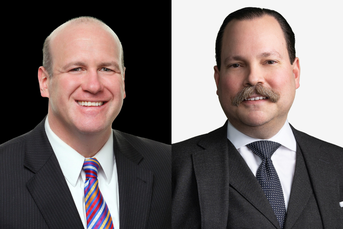Groups opposing DOL fiduciary rule step up lobbying spending
Proponents' dollars lag this year, with a focus on grass-roots action.
Interest groups wanting to stop a Labor Department proposal that would change the rules for investment advice to retirement accounts have stepped up their lobbying expenditures.
The Financial Services Institute, for instance, has spent $428,876 on lobbying during the first half of the year, compared to $337,160 during the same period in 2014, according to a filing with the Office of the House Clerk.
“We continue to expand our advocacy resources so we can be effective on all our advocacy priorities, including the DOL fiduciary rule,” FSI spokeswoman Allison Kuehner wrote in an email.
The Insured Retirement Institute boosted its spending to $160,000 from $130,000 in the first half of last year, while the American Council of Life Insurers has spent $2.52 million this year compared to $1.5 million in 2014.
(More: “Opponents to DOL fiduciary rule say tweaks aren’t enough”)
It’s impossible to determine how much of the lobbying investment directly relates to the DOL initiative, but the jump in outlays corresponds to a higher level of activity surrounding the measure, which was introduced in April with White House backing.
“The numbers are a reflection of how important the issue is to an organization,” said Dan Barry, senior Washington analyst at Bloomberg Intelligence and a former Financial Planning Association government relations head.
Some proponents of the DOL fiduciary rule have invested modestly in lobbying.
The Financial Planning Association has spent $15,000 so far this year, compared to $40,000 at the same time last year. The Financial Planning Coalition — of which FPA is a member, along with the Certified Financial Planner Board of Standards Inc. and the National Association of Personal Financial Advisors — has spent $20,000 this year, after spending $30,000 in 2014. Both groups used outside lobbyists. The FPA hired the Raben Group, while the FPC hired lobbyist Phillip Rivers.
The numbers only relate to Capitol Hill lobbying. Meetings with agency officials — other than those at the top — and writing comment letters on rule proposals do not figure into the spending calculations.
“The amount of money won’t necessarily tip the balance on who wins or loses the battle,” Mr. Barry said. “You do have to look at the grass-roots effort.”
On that front, the FPA sent more than 60 members to Washington in June to lobby members of Congress on a range of issues. Part of their agenda included an effort to stop appropriations provisions that would prevent funding for implementation of the DOL rule.
AARP, an ardent supporter of the DOL measure, has spent $3.75 million this year, versus $4.35 million last year.
Some heavy-hitter opponents in the investment advice industry have kept their lobbying spending steady.
The Securities Industry and Financial Markets Association has spent $3.72 million this year, compared to $3.78 million last year. The Investment Company Institute spent $2.47 million in 2015 and $2.46 million in 2014. The lobbying outlay for the National Association of Insurance and Financial Advisors is $1.36 million so far this year, compared with $1.39 last year.
The Financial Industry Regulatory Authority Inc., the industry-funded broker regulator and another DOL rule opponent, has spent $420,000 this year. (Finra’s total spending in 2014 was $870,000, though the first half was not broken out.)
2015
2014
Learn more about reprints and licensing for this article.








